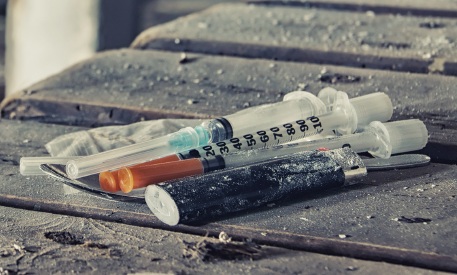Legal Barriers to Overdose Prevention
Interview with Corey Davis, J.D., M.S.P.H. at Network for Public Health Law
by Tessie Castillo, NCHRC Program Coordinator
Drug overdose from prescription painkillers is a serious epidemic, both in North Carolina and across the nation. In North Carolina alone, overdose death has approximately tripled in the last decade, up to 1000 deaths annually.
Many factors may contribute to the growing number of opiate-related deaths, including increased prescription of painkillers, an aging population, substitution away from illegal drugs, poor pain management, and lack of education and awareness of the signs and risks of overdose. But many legal barriers also stand in the way of effective overdose prevention. Corey Davis, an attorney with the Network for Public Health Law, has been studying these legal barriers and how a slight change to the law can translate into saving lives in NC.
For example, he explains, there is a drug available, naloxone, or Narcan, which blocks the effects of opiates in the brain and reverses an overdose within seconds. Narcan is not a controlled substance, cannot be abused, and has been safely utilized for decades by medical emergency personnel. Studies have shown Narcan to be effective at reversing an overdose even when administered by a layperson, such as a family member or friend of someone experiencing an overdose. However, Narcan can be difficult to access.
“It’s difficult to get naloxone because it is available by prescription only,” explains Attorney Davis. “It can be expensive to see a doctor and most doctors don’t routinely prescribe it when they prescribe a strong opioid. Some physicians may be worried that if something should happen, they could be civilly or criminally liable. Although there is no evidence that the [risk] of liability is real, it does seem to be a concern for physicians.”
Some states have amended their laws to protect medical practitioners from liability should they prescribe Narcan and laypeople who administer the drug.
“Eight states so far have explicitly changed their laws to encourage people to use naloxone in an overdose situation without fear of legal repercussions,” says Attorney Davis. “[The laws] vary a little bit between states, but in general they remove the possibility of civil liability for prescribers acting in good faith and for bystanders who act in good faith [to save a life].”
Not only is fear of liability a barrier to overdose prevention, but fear of law enforcement prevents more than half of witnesses to an overdose from calling for help, and leads to countless preventable deaths. To address this problem, many states have passed 911 Good Samaritan laws granting limited immunity to overdose witnesses who call 911 to save a life. Under these laws, witnesses may not be prosecuted for possession of small amounts of drugs or paraphernalia. Studies have shown that 911 Good Samaritan laws do increase the likelihood that witnesses will call for help in the event of an overdose.
Additional benefits of 911 Good Samaritan laws and legislation to increase access to Narcan are that they can be achieved at little to no additional cost to taxpayers. As Attorney Davis explains, states even save money by reducing costs to both the medical system and the penal system. Fewer people dying and fewer people in jail for minor charges means less spending and greater fiscal flexibility. And of course, the greatest advantage to the laws is the prevention of needless deaths.
“Naloxone access laws and 911 Good Samaritan laws are really just two sides of the same coin,” says Attorney Davis. “A model bill in North Carolina would increase access to naloxone by permitting physicians to prescribe it without fear of civil or criminal liability. It would also permit them to dispense naloxone to friends and family of someone at risk for an overdose… [Additionally, a model bill] would encourage people to call for help by removing the possibility that they would face criminal sanction for calling 911 in good faith to save someone's life.”
These simple pieces of legislation make legal sense. They make fiscal sense. They make sense for the people of North Carolina who will lose a loved one to drug overdose and for the one thousand souls who will die too soon this year. As Attorney Davis explains, “Nobody should be afraid or punished for trying to save a life.”
